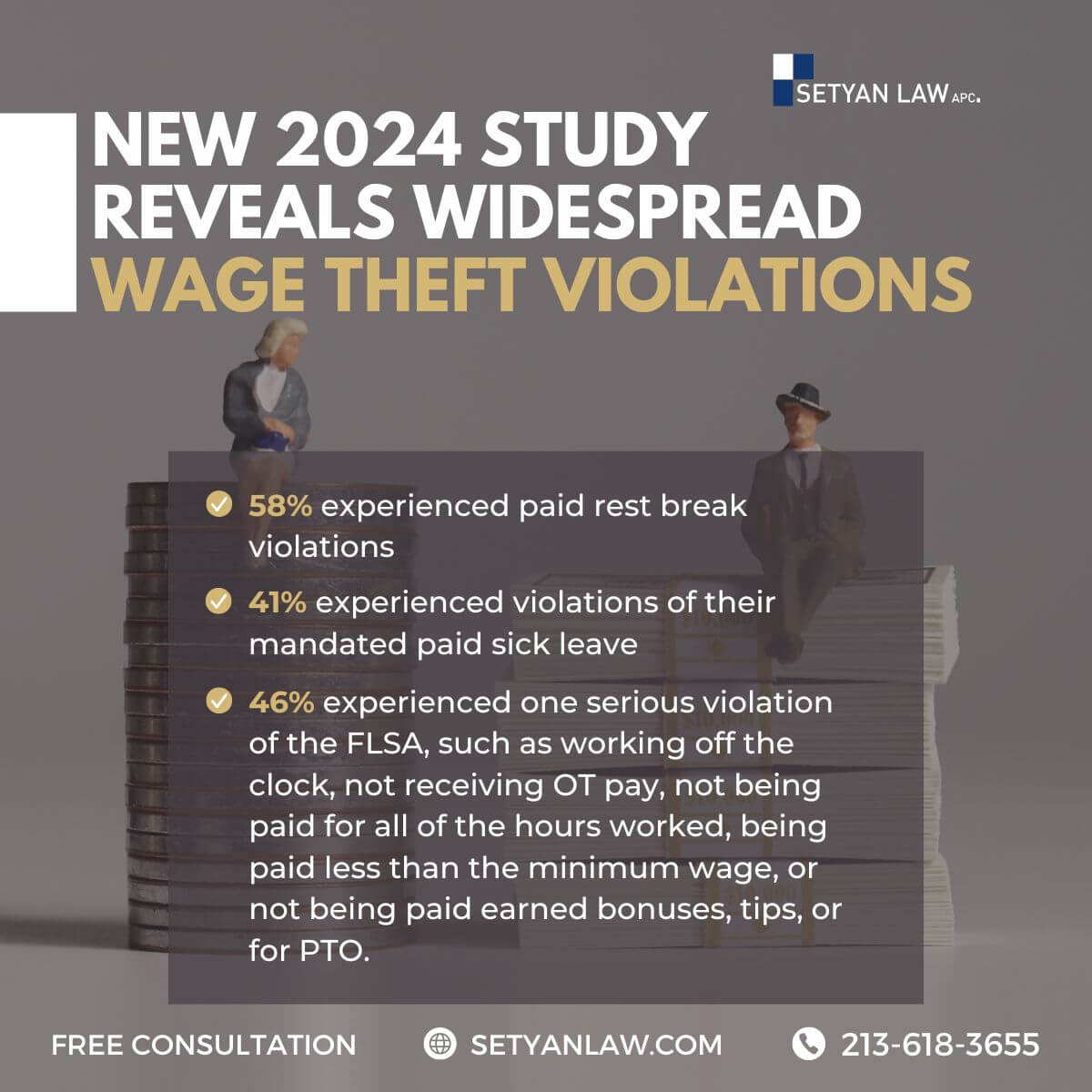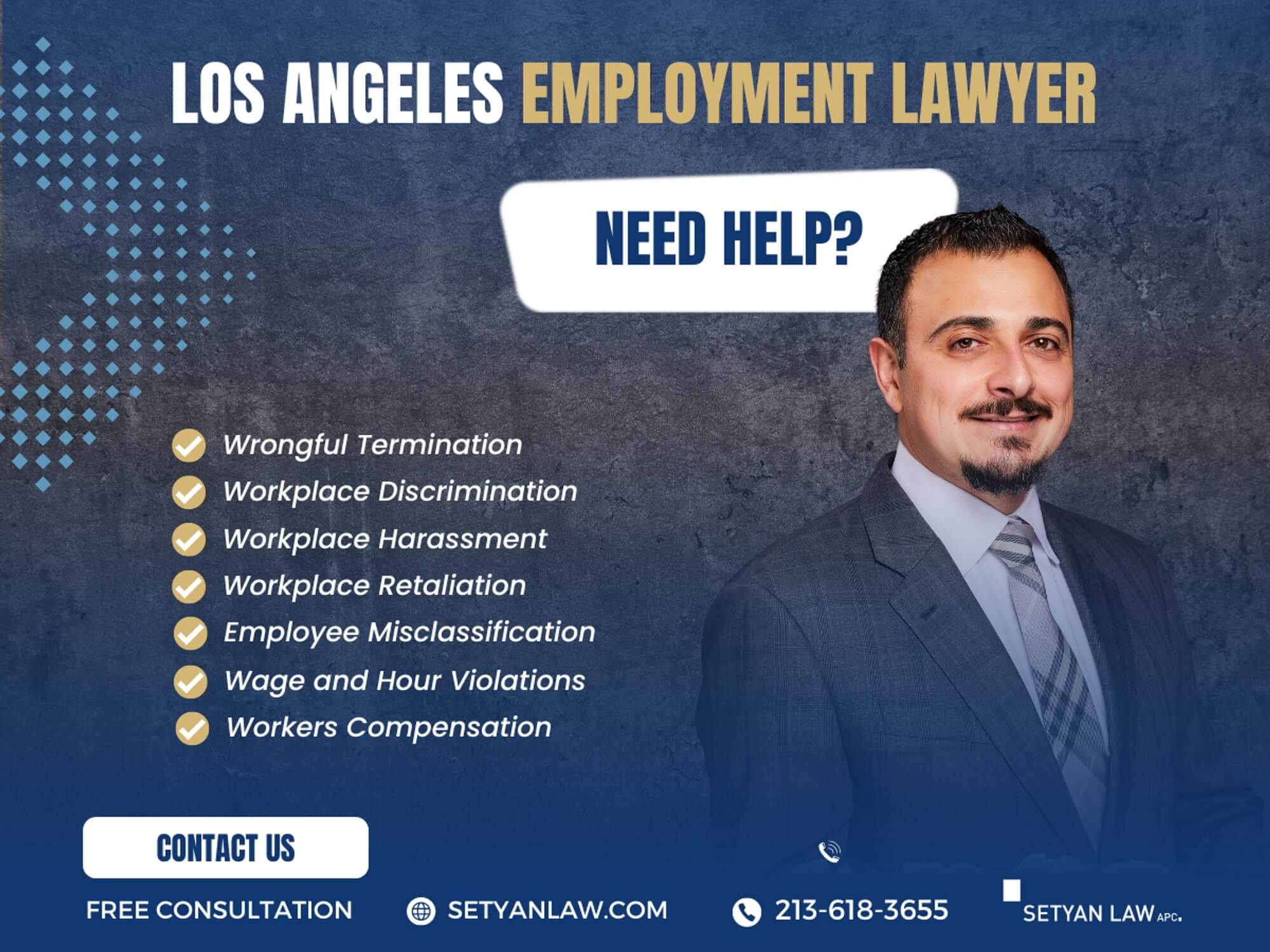Updated March 18, 2025
California Overtime Laws: Overview
California stands apart from other states with its distinctive approach to overtime regulations. These comprehensive provisions aim to protect workers from exploitation while ensuring fair compensation for extended work hours. For employers operating within the Golden State, comprehending these nuances isn’t merely beneficial—it’s essential for maintaining legal compliance and avoiding potentially costly penalties.
The intricacies of California’s overtime framework extend beyond federal standards, incorporating daily thresholds, double-time provisions, and special considerations for consecutive workdays. Whether you’re managing payroll for a large corporation, running a small business, or working as an employee seeking to understand your entitlements, navigating these regulations requires careful attention to detail.
In this comprehensive guide, we’ll explore the fundamental principles of California overtime laws, examine how they differ from federal requirements, and provide practical examples to illustrate their application in various scenarios. We’ll also address common exceptions, alternative work schedules, and the potential consequences of non-compliance. By the end, you’ll have a clearer understanding of your rights and responsibilities concerning overtime compensation in California.
California Overtime Laws: The Basics
California’s approach to overtime compensation significantly exceeds federal requirements, offering workers more comprehensive protections. While the federal Fair Labor Standards Act (FLSA) only mandates overtime for hours worked beyond 40 in a workweek, California law implements additional thresholds that trigger overtime pay obligations.
Daily Overtime Thresholds
In California, overtime compensation becomes mandatory when an employee works more than eight hours in a single workday. This daily threshold represents a fundamental distinction from federal regulations, which contain no comparable provision. For hours worked beyond this eight-hour limit but not exceeding twelve hours, employers must compensate workers at 1.5 times their regular rate of pay—commonly known as "time and a half."
For example, if an employee earning $20 per hour works a ten-hour shift, they would receive their standard rate for the first eight hours ($160) plus an enhanced rate of $30 per hour for the additional two hours ($60), totaling $220 for the day. This calculation applies regardless of whether the employee works fewer than 40 hours in the complete workweek, highlighting California’s emphasis on limiting extended daily work periods.
Double-Time Requirements
California further distinguishes itself by mandating double-time pay in certain circumstances. When an employee works beyond twelve hours in a single workday, compensation must increase to twice their regular rate for those excess hours. This provision acknowledges the significant impact of extremely long shifts on worker wellbeing and creates a financial disincentive for employers to schedule such extended workdays.
The double-time requirement also applies to hours worked beyond eight on the seventh consecutive day of work within a workweek. This rule aims to discourage excessive consecutive workdays and ensure appropriate compensation when such schedules become necessary.
Weekly Overtime Provisions
While California’s daily overtime thresholds often receive the most attention, the state also maintains the federal standard requiring overtime for hours worked beyond 40 in a workweek. This means employees must receive overtime compensation at 1.5 times their regular rate for hours exceeding this weekly threshold, even if no single day involved more than eight hours of work.
For instance, an employee who works six 7-hour days (totaling 42 hours) would be entitled to overtime pay for the final two hours of the week, despite never triggering the daily overtime threshold. This provision ensures comprehensive protection against excessive weekly work hours, complementing the daily standards.
How California Overtime Differs from Federal Standards
The distinctions between California’s overtime framework and federal requirements create significant compliance challenges for employers operating across multiple states. Understanding these differences is crucial for accurate payroll processing and avoiding potential legal issues.
Multiple Overtime Triggers
The most notable difference lies in California’s implementation of multiple overtime triggers. While federal law exclusively focuses on the 40-hour workweek threshold, California establishes several independent conditions that can activate overtime requirements:
- Working more than eight hours in a single workday
- Working more than 40 hours in a workweek
- Working on the seventh consecutive day in a workweek
- Working more than 12 hours in a single workday (triggering double-time)
- Working more than eight hours on the seventh consecutive day (triggering double-time)
Each of these conditions stands independently, meaning employees become eligible for overtime whenever any threshold is crossed, regardless of their total weekly hours. This multi-faceted approach provides significantly broader protection than the singular federal standard.
Higher Minimum Wage Implications
California’s higher minimum wage directly impacts overtime calculations. As of January 2024, the state minimum wage stands at $16.00 per hour for all employers, substantially exceeding the federal minimum of $7.25. This higher base rate naturally results in higher overtime compensation, with time-and-a-half equating to $24.00 per hour and double-time reaching $32.00 per hour for minimum wage workers.
Specialized minimum wage provisions further complicate matters. Fast food workers must receive at least $20.00 per hour as of April 2024, while healthcare workers will be entitled to $21.00 per hour beginning June 1, 2024. These industry-specific rates create corresponding increases in overtime calculations for affected employees.
No De Minimis Exception
Federal overtime regulations incorporate a "de minimis" doctrine that allows employers to disregard trivially small periods of work time that are difficult to record. California courts have explicitly rejected this exception, requiring compensation for all work time, regardless of duration. This means California employers must track and compensate even brief periods of overtime work that might be excludable under federal standards.
This strict approach extends to activities like brief pre-shift preparations or post-shift cleanup that might be considered de minimis under federal law but require compensation under California standards. The practical effect is that California employers need more precise timekeeping systems and must carefully monitor all work activities.
Calculating Overtime in California: Practical Examples
Understanding California’s overtime provisions in theory is important, but applying them to real-world scenarios reveals their practical impact. The following examples illustrate how these regulations function across different work schedules and highlight the sometimes surprising results of California’s multi-faceted approach.
Example 1: Standard Workweek with Daily Overtime
Consider an employee who works the following schedule at $20 per hour:
- Monday: 10 hours
- Tuesday: 9 hours
- Wednesday: 8 hours
- Thursday: 7 hours
- Friday: 6 hours
- Weekend: No work
Despite working exactly 40 hours for the week, this employee is entitled to overtime pay for the extra hours worked on Monday and Tuesday. The calculation would proceed as follows:
- Regular pay for 8 hours each day: 5 days × 8 hours × $20 = $800
- Overtime pay for Monday: 2 hours × $30 (1.5 × regular rate) = $60
- Overtime pay for Tuesday: 1 hour × $30 = $30
- Total compensation: $800 + $60 + $30 = $890
This example demonstrates how California’s daily overtime threshold can trigger overtime compensation even when the total weekly hours don’t exceed 40—a scenario where federal law would require only regular pay.
Example 2: Extended Workday with Double-Time
Now consider an employee who works a 13-hour shift on Friday at $25 per hour, with no other work during the week:
- Regular pay for first 8 hours: 8 hours × $25 = $200
- Overtime pay (1.5×) for hours 9-12: 4 hours × $37.50 = $150
- Double-time pay for hour 13: 1 hour × $50 = $50
- Total compensation for the day: $200 + $150 + $50 = $400
This scenario illustrates California’s double-time requirement for hours worked beyond 12 in a single day. Even though the employee worked only 13 hours for the entire week—well below the 40-hour threshold—they still received premium pay for the extended workday.
Example 3: Seventh Consecutive Day
Consider an employee who works seven consecutive days, with 6 hours each day, at $18 per hour:
- Regular pay for first six days: 6 days × 6 hours × $18 = $648
- Overtime pay (1.5×) for seventh day: 6 hours × $27 = $162
- Total weekly compensation: $648 + $162 = $810
This example demonstrates California’s requirement for overtime on the seventh consecutive workday, regardless of total hours. Despite working only 42 hours total (which would trigger just 2 hours of overtime under federal law), the employee receives 6 hours of overtime pay due to the consecutive day provision.
Example 4: Multiple Overtime Triggers
Finally, consider an employee who works the following schedule at $22 per hour:
- Monday through Friday: 9 hours each day
- Saturday: 8 hours
- Sunday: 6 hours
This schedule triggers multiple overtime provisions:
- Daily overtime: 1 hour each weekday (5 hours total)
- Weekly overtime: 45 hours total – 40 regular hours = 5 hours
- Seventh consecutive day: All 6 hours on Sunday
The correct calculation requires careful tracking of which hours qualify under which provisions, avoiding double-counting:
- Regular pay: 40 hours × $22 = $880
- Daily overtime: 5 hours × $33 = $165
- Weekly overtime beyond daily: 0 hours (already counted in daily)
- Seventh day premium: 6 hours × $33 = $198
- Total compensation: $880 + $165 + $198 = $1,243
This complex example illustrates how California’s multiple overtime triggers interact, potentially resulting in significantly higher compensation than would be required under federal standards alone.
Understanding Regular Rate of Pay
The foundation of accurate overtime calculations rests on properly determining an employee’s "regular rate of pay." While this might seem straightforward for hourly workers, various compensation structures and additional payments can complicate this calculation significantly.
Defining Regular Rate for Different Pay Structures
For hourly employees, the regular rate typically equals their standard hourly wage. However, for salaried non-exempt employees, the calculation requires dividing their weekly salary by the number of hours that salary is intended to compensate.
For example, if a salaried employee earns $1,000 weekly for an expected 40-hour workweek, their regular rate would be $25 per hour. This becomes their base rate for calculating overtime premiums if they work additional hours. California law specifically addresses situations where the salary covers fewer than 40 hours, requiring employers to use the actual number of hours covered by the salary when determining the regular rate.
Piece-rate workers, commission-based employees, and those with fluctuating workweeks present additional challenges. For these workers, the regular rate typically involves dividing total earnings by total hours worked within the relevant pay period, ensuring overtime premiums properly reflect all compensation received.
Including Additional Compensation
California law requires including most forms of compensation when calculating the regular rate of pay. This encompasses:
- Production bonuses and incentive payments
- Commissions earned during the pay period
- Shift differentials and premium pay for undesirable shifts
- Non-discretionary bonuses tied to performance metrics
- The value of meals, lodging, or other facilities provided as compensation
These additional forms of compensation must be incorporated into the regular rate calculation, effectively increasing the base rate used for overtime premiums. This comprehensive approach ensures overtime calculations reflect the employee’s true compensation level rather than just their base hourly rate.
Exclusions from Regular Rate Calculations
Not all payments factor into the regular rate determination. California law permits excluding:
- True discretionary bonuses not announced in advance
- Gifts for special occasions unrelated to hours worked
- Profit-sharing payments meeting specific criteria
- Contributions to bona fide benefit plans
- Premium payments already calculated at overtime rates
- Expense reimbursements for costs incurred on the employer’s behalf
These exclusions align generally with federal standards but require careful documentation to justify their omission from regular rate calculations. Employers should maintain clear records demonstrating why certain payments qualify for exclusion.
Calculating Regular Rate for Salaried Non-Exempt Employees
A particularly challenging scenario involves salaried employees who don’t qualify for exemption from overtime requirements. For these workers, the regular rate calculation depends on understanding how many hours their salary is intended to compensate.
If a non-exempt employee receives a salary of $800 weekly with an explicit understanding it covers 40 hours, their regular rate would be $20 per hour. However, if their agreement specifies the salary covers only 35 hours per week, the regular rate increases to approximately $22.86 per hour, affecting all overtime calculations.
California courts have consistently held that when the number of hours a salary is intended to compensate isn’t explicitly stated, the presumption is that it covers only the legal maximum regular hours (40 per week) rather than all hours actually worked. This interpretation generally favors employees by establishing a higher regular rate for overtime calculations.
Meal and Rest Break Requirements
California’s approach to meal and rest breaks intertwines closely with its overtime provisions, creating additional compliance considerations for employers. Understanding how these breaks affect working time calculations is essential for accurate overtime determination.
Mandatory Meal Periods
California law mandates a 30-minute unpaid meal break when an employee works more than five hours in a workday. This break must begin before the end of the fifth hour of work and must be uninterrupted, with the employee relieved of all duties. When an employee works more than 10 hours, a second 30-minute meal period becomes required.
Importantly, these meal periods are generally unpaid and not counted as working time for overtime calculations, provided employees are completely relieved of duties. If an employee remains on duty during a meal period (which requires a written agreement), that time counts as compensable work time and factors into overtime calculations.
If an employer fails to provide required meal periods, they must pay the employee one additional hour of pay at the regular rate for each workday the meal period is missed. This premium pay is separate from any overtime obligations but represents a significant compliance concern.
Required Rest Breaks
California also mandates paid 10-minute rest breaks for every four hours worked or major fraction thereof. These breaks should be provided in the middle of each work period when practicable. Unlike meal periods, rest breaks are paid and count as working time for overtime purposes.
The general guideline for rest breaks follows this pattern:
- Less than 3.5 hours: No rest break required
- 3.5 to 6 hours: One 10-minute rest break
- 6 to 10 hours: Two 10-minute rest breaks
- 10 to 14 hours: Three 10-minute rest breaks
As with missed meal periods, employers who fail to provide required rest breaks must pay the employee one additional hour at the regular rate for each workday with missed rest breaks (limited to one premium payment per day regardless of how many breaks were missed).
Impact on Overtime Calculations
The interplay between break requirements and overtime calculations creates several important considerations:
- Rest breaks count as working time and must be included when determining total hours worked for overtime purposes.
- Properly provided unpaid meal breaks don’t count toward working time.
- If an employee works during what should be an unpaid meal break, that time counts toward total hours worked and may trigger overtime obligations.
- Premium payments for missed breaks don’t count toward regular rate calculations for overtime purposes.
For example, an employee scheduled for an 8.5-hour shift including a 30-minute unpaid meal break would typically receive 8 hours of regular pay. However, if the employee works through their meal break, they would have worked 8.5 hours and be entitled to 0.5 hours of overtime at 1.5 times their regular rate.
Documentation Requirements
California employers must maintain accurate records of meal periods, including when they begin and end. While similar documentation isn’t explicitly required for rest breaks, prudent employers often track these as well to demonstrate compliance.
Employers should implement systems ensuring employees can easily record when they take breaks and when they return to work. Many employers use electronic timekeeping systems with specific codes for meal and rest breaks to facilitate accurate tracking and demonstrate good-faith compliance efforts.
Alternative Workweek Schedules like 4/10
California recognizes that traditional 8-hour workdays don’t suit every workplace. The state provides a mechanism for implementing alternative workweek schedules (AWS) that modify overtime triggers while maintaining employee protections.
Establishing an Alternative Workweek Schedule
Implementing an AWS requires following specific procedural requirements:
- The employer must propose a written alternative schedule to affected employees in a readily understandable format.
- The proposal must designate a regularly scheduled number of workdays and hours, not exceeding 10 hours per day.
- The employer must hold meetings with affected employees at least 14 days before voting to discuss the effects of the proposed arrangement.
- The alternative schedule must be approved by a two-thirds secret ballot vote of affected employees.
- Results must be reported to the California Department of Industrial Relations within 30 days.
- The AWS can’t be implemented until at least 30 days after employee notification of voting results.
These procedural safeguards ensure employees have meaningful input into schedule changes that affect their overtime entitlements. Failure to follow these steps precisely invalidates the AWS and subjects the employer to standard overtime requirements.
Common Alternative Schedules
Several alternative schedules have gained popularity in California workplaces:
4/10 Schedule: Employees work four 10-hour days each week. Under a properly adopted AWS, no daily overtime is owed for the first 10 hours, though hours beyond 10 in a day or 40 in a week still trigger overtime requirements.
9/80 Schedule: Employees work 80 hours over nine days in a two-week period, typically with eight 9-hour days and one 8-hour day. This arrangement requires careful designation of the workweek to avoid overtime liability.
12-Hour Shifts: Particularly common in healthcare and manufacturing settings, these schedules typically involve three 12-hour days one week and four 12-hour days the next. Special rules apply to healthcare industry employees working 12-hour shifts.
Each of these arrangements modifies when overtime becomes payable, but doesn’t eliminate overtime requirements entirely. Even under an AWS, hours beyond the regularly scheduled workday (up to 12) require time-and-a-half pay, and hours beyond 12 in a day or 40 in a week always require appropriate overtime premiums.
Limitations and Protections
Alternative workweek schedules cannot eliminate double-time requirements for hours worked beyond 12 in a day. Additionally, employees working under an AWS who work beyond their regularly scheduled hours but less than 12 hours in a day must receive overtime compensation for those additional hours.
Employers must make reasonable accommodations for employees unable to work the alternative schedule due to religious beliefs or childcare obligations. If such accommodations aren’t possible, affected employees must be permitted to work a regular 8-hour schedule without retaliation.
Once established, an AWS can be repealed through another two-thirds secret ballot vote initiated by petition from one-third of affected employees. Employers seeking to discontinue an AWS must provide reasonable notice to employees before implementation.
Industry-Specific Provisions
Certain industries have specialized AWS provisions:
Healthcare Industry: Hospitals and healthcare facilities can implement 12-hour shift schedules with overtime only after 40 hours in a week or 12 hours in a day, subject to specific requirements.
Motion Picture Industry: Special rules apply to various categories of workers in film production, with different overtime thresholds for studio and location work.
Agricultural Workers: Phased-in overtime requirements apply with different thresholds based on employer size and implementation timeline.
These industry-specific provisions acknowledge unique operational requirements while maintaining appropriate employee protections. Employers in these sectors should consult the applicable Wage Orders for detailed requirements.
Exceptions to Standard Overtime Rules
While California’s overtime framework applies broadly, numerous exceptions exist for specific industries, occupations, and work arrangements. These exceptions reflect the diverse nature of employment relationships and operational requirements across different sectors.
Executive, Administrative, and Professional Exemptions
Similar to federal law, California exempts certain executive, administrative, and professional employees from overtime requirements. However, California’s standards for these exemptions are generally more stringent than federal criteria. To qualify for exemption, employees must:
- Primarily perform exempt duties (more than 50% of their work time)
- Regularly exercise discretion and independent judgment
- Earn a monthly salary equivalent to at least twice the state minimum wage for full-time employment
The salary threshold is particularly significant. As of January 2024, with California’s $16.00 minimum wage, exempt employees must earn at least $66,560 annually ($5,546.67 monthly). This substantially exceeds the federal threshold of $35,568 annually.
Specific duties tests apply to each exemption category, with detailed requirements concerning management responsibilities, administrative functions, or specialized professional knowledge. Misclassification of employees as exempt when they don’t meet these criteria represents a common and costly compliance error.
Industry-Specific Exemptions
Several industries operate under modified overtime rules tailored to their unique operational characteristics:
Agricultural Workers: Subject to phased-in overtime requirements with different thresholds based on employer size. By January 2025, all agricultural employers will need to pay overtime after 8 hours daily or 40 hours weekly.
Camp Counselors: No daily overtime required; weekly overtime applies after 54 hours or six days in a workweek.
Personal Attendants: No daily overtime; weekly overtime after 40 hours or six days in a workweek.
Live-in Domestic Workers: Special provisions apply based on whether employees live on premises, with different thresholds for sixth and seventh consecutive workdays.
Ski Industry Workers: May have regularly scheduled workweeks of up to 48 hours during ski season months, with overtime after 10 hours daily or 48 hours weekly.
These industry-specific provisions balance worker protections with operational realities but require careful attention to ensure proper implementation.
Collective Bargaining Agreement Exceptions
Certain collective bargaining agreements can include provisions that supersede standard overtime requirements if they explicitly provide:
- Premium wage rates for overtime hours
- Regular hourly rates exceeding state minimum wage by at least 30%
- Clearly defined working conditions and hours
This exception recognizes the role of collective bargaining in establishing employment terms while ensuring minimum compensation standards. However, not all industries qualify for this exception, and specific requirements vary by Wage Order.
Other Notable Exceptions
Additional exceptions apply to various specialized situations:
Commissioned Sales Employees: Exemption available for employees earning more than 1.5 times minimum wage with more than half their compensation from commissions.
Computer Software Professionals: Specific exemption with higher salary requirements ($112,065.20 annually for 2024) and detailed duties tests.
Healthcare Industry: Special rules for ambulance drivers/attendants with 24-hour shifts and specific provisions for patient care facilities.
Transportation Industry: Modified rules for certain commercial drivers, with different thresholds based on vehicle type and operational parameters.
These exceptions highlight the complexity of California’s overtime framework and the importance of carefully evaluating each employment situation against applicable standards. When uncertainty exists, the safest approach is generally to apply standard overtime rules unless an exception clearly applies.
Enforcement and Penalties for Non-Compliance
California vigorously enforces its overtime regulations through multiple mechanisms, imposing significant penalties on non-compliant employers. Understanding these enforcement processes and potential consequences is essential for effective risk management.
The Role of the Labor Commissioner’s Office
The California Division of Labor Standards Enforcement (DLSE), headed by the Labor Commissioner, serves as the primary enforcement agency for overtime violations. The DLSE investigates complaints, conducts workplace inspections, and adjudicates wage claims through an administrative process.
When an employee files a wage claim alleging unpaid overtime, the DLSE typically:
- Reviews the claim for jurisdictional and substantive validity
- Schedules a settlement conference to attempt resolution
- If settlement fails, conducts a formal hearing where both parties present evidence
- Issues a binding decision (called an Order, Decision, or Award)
This administrative process provides a more accessible alternative to court litigation, though either party can appeal DLSE decisions to civil court within a specified timeframe.
The DLSE also conducts targeted enforcement through its Bureau of Field Enforcement (BOFE), which investigates industries with histories of labor violations. These investigations can result from complaints or proactive enforcement initiatives focusing on high-risk sectors.
Statute of Limitations
Employees seeking unpaid overtime have limited time to pursue claims:
- Three years for statutory claims under the Labor Code
- Four years for claims based on unfair business practices
- Up to four years if the employer willfully violated overtime requirements
These timeframes mean employers may face liability for overtime violations occurring several years in the past, highlighting the importance of maintaining accurate time and payroll records for extended periods.
Financial Penalties
Employers who violate overtime requirements face multiple financial consequences:
Back Wages: Payment of all unpaid overtime compensation, calculated at the appropriate premium rates.
Liquidated Damages: For minimum wage violations (which can occur when overtime isn’t properly calculated), additional damages equal to the unpaid wages.
Interest: Accrues at 10% per annum on all unpaid wages from the date they were originally due.
Waiting Time Penalties: If overtime remains unpaid when employment ends, penalties equal to the employee’s daily wage for up to 30 days.
Civil Penalties: For initial violations, $50 per underpaid employee per pay period, increasing to $100 for subsequent violations.
These penalties can multiply quickly, especially in cases involving multiple employees over extended periods. For example, a relatively minor overtime violation affecting 20 employees over two years could potentially result in liability exceeding $100,000 when all penalties are considered.
Criminal Prosecution
In egregious cases, overtime violations can lead to criminal charges. Willful violations of wage orders or labor code provisions are misdemeanors punishable by fines up to $10,000 and imprisonment up to six months. While criminal prosecution remains relatively rare, it represents a significant risk for flagrant or repeated violations.
Private Litigation
Beyond DLSE enforcement, employees can pursue overtime claims through private litigation, including:
Individual Lawsuits: Employees can file civil actions seeking unpaid wages, penalties, interest, and attorney’s fees.
Class Actions: When similar violations affect numerous employees, class action lawsuits consolidate claims into a single proceeding.
Private Attorneys General Act (PAGA) Claims: Employees can sue on behalf of themselves and other employees for Labor Code violations, with 75% of penalties going to the state.
PAGA claims have become particularly significant in recent years, as they allow employees to pursue penalties otherwise only available through agency enforcement. These claims often involve substantial potential liability and cannot be waived through arbitration agreements.
The combination of agency enforcement, criminal penalties, and private litigation creates a robust enforcement framework that significantly incentivizes compliance with California’s overtime requirements.
Best Practices for Employers
Navigating California’s complex overtime regulations requires proactive compliance strategies. Implementing these best practices can help employers minimize risk while ensuring employees receive appropriate compensation.
Comprehensive Timekeeping Systems
Accurate time records form the foundation of overtime compliance. Employers should:
- Implement electronic timekeeping systems that track all work time, including fractional hours.
- Require employees to record start and stop times for all work periods, including meal breaks.
- Establish clear protocols for recording time worked outside regular shifts, including remote work.
- Regularly audit timekeeping practices to identify and address compliance gaps.
- Retain all time records for at least four years to cover potential claims periods.
Modern timekeeping systems can automatically flag potential overtime situations, helping managers proactively address scheduling issues before they create compliance problems. These systems should accommodate California’s unique overtime triggers, including daily thresholds and seventh-day provisions.
Clear Policies and Training
Well-documented policies and comprehensive training significantly reduce overtime compliance risks:
- Develop written overtime policies addressing authorization procedures, timekeeping requirements, and meal/rest break expectations.
- Clearly communicate that all work time must be recorded, regardless of whether it was pre-authorized.
- Train supervisors on California’s specific overtime requirements and their role in ensuring compliance.
- Regularly remind employees about timekeeping obligations and the importance of taking required breaks.
- Establish clear procedures for reporting timekeeping errors or missed breaks.
These policies should explicitly prohibit "off-the-clock" work while establishing that all recorded work time will be paid appropriately, even if not authorized in advance. This approach balances compliance requirements with legitimate management interests in controlling labor costs.
Regular Compliance Audits
Proactive compliance monitoring helps identify and address issues before they escalate:
- Conduct periodic audits comparing time records against other indicators of work activity (building access logs, computer login records, etc.).
- Review payroll calculations to ensure proper application of overtime premiums for all qualifying hours.
- Analyze meal break patterns to identify potential compliance issues.
- Compare actual work schedules against projected schedules to identify overtime trends.
- Review exempt employee classifications to ensure they continue to meet applicable criteria.
These audits should involve collaboration between HR, payroll, and legal departments to ensure comprehensive evaluation of compliance risks. When issues are identified, prompt corrective action should include both remediation of specific violations and systemic improvements to prevent recurrence.
Managing Alternative Work Arrangements
As remote and flexible work arrangements become increasingly common, employers must adapt overtime compliance strategies:
- Establish clear expectations regarding work hours for remote employees.
- Implement appropriate timekeeping mechanisms for off-site work.
- Train managers to monitor work patterns and address potential overtime issues.
- Consider geographic variations in overtime requirements for employees working in multiple locations.
- Regularly review and update policies to address evolving work arrangements.
These strategies recognize the challenges of monitoring work time in non-traditional settings while maintaining appropriate compliance controls. Clear communication and consistent enforcement are particularly important in managing overtime compliance for remote workers.
Addressing Compliance Violations
When overtime violations occur despite preventive efforts, prompt and appropriate remediation is essential:
- Immediately correct any underpayment by providing affected employees with all owed compensation.
- Document the violation, its causes, and corrective actions taken.
- Implement systemic improvements to prevent similar violations.
- Consider self-reporting significant violations to appropriate agencies.
- Review whether the violation suggests broader compliance issues requiring more comprehensive remediation.
Prompt remediation demonstrates good faith and may mitigate potential penalties if violations are subsequently discovered through agency investigation or employee complaints. It also helps maintain employee trust and reduces the likelihood of formal claims.
Resources for Compliance Assistance
Navigating California’s overtime requirements can be challenging, but numerous resources are available to help employers and employees understand their rights and obligations.
Government Resources
State agencies provide authoritative guidance on overtime requirements:
California Department of Industrial Relations (DIR): Offers comprehensive information on overtime regulations, including industry-specific guidance and frequently asked questions. The DIR website (dir.ca.gov) provides access to all Wage Orders, opinion letters, and enforcement policies.
Division of Labor Standards Enforcement (DLSE): Publishes enforcement manuals and interpretive guidance detailing how the agency applies overtime requirements in various contexts. The DLSE also maintains a helpline for specific questions.
Industrial Welfare Commission (IWC) Wage Orders: These industry-specific regulations contain detailed overtime provisions applicable to particular sectors. Understanding the appropriate Wage Order is essential for compliance.
These government resources provide the most authoritative guidance on overtime requirements, though they sometimes lag behind emerging issues and may not address every specific situation employers encounter.
Professional Associations and Industry Groups
Industry-specific organizations often provide targeted compliance assistance:
California Employers Association: Offers member hotlines, compliance materials, and training programs focused on state employment laws.
Industry-Specific Associations: Organizations like the California Restaurant Association or California Hospital Association provide guidance tailored to their members’ unique operational contexts.
Chamber of Commerce Organizations: Local and state chambers often offer compliance resources and educational programs addressing overtime requirements.
These organizations typically provide more practical, implementation-focused guidance than government resources, though their interpretations may sometimes reflect advocacy positions rather than regulatory certainty.
Legal and Consulting Services
Professional advisors can provide customized compliance assistance:
Employment Attorneys: Specialized lawyers can review policies, advise on specific situations, and represent employers in enforcement proceedings or litigation.
HR Consulting Firms: These organizations offer compliance audits, policy development, and training programs addressing overtime requirements.
Payroll Service Providers: Many payroll companies offer compliance tools specifically designed for California employers, including specialized timekeeping systems and overtime calculation modules.
While these services involve costs, they often provide the most tailored guidance and can significantly reduce compliance risks through preventive measures and early intervention when issues arise.
Technology Solutions
Specialized software can streamline overtime compliance:
Workforce Management Systems: These platforms automate timekeeping, scheduling, and overtime calculations based on California’s specific requirements.
Payroll Software: Many payroll systems include California-specific modules that properly calculate overtime based on the state’s unique triggers.
Compliance Tracking Tools: These applications help monitor meal breaks, track consecutive days worked, and flag potential overtime issues before they create liability.
When evaluating technology solutions, employers should specifically verify their capability to handle California’s distinctive overtime requirements, as systems designed for national use may not adequately address state-specific provisions.
Educational Resources
Ongoing education helps maintain compliance awareness:
Webinars and Seminars: Many organizations offer regular educational programs addressing overtime compliance, often focusing on recent developments and emerging issues.
Online Courses: Self-paced training modules can help managers and HR professionals develop comprehensive understanding of overtime requirements.
Publications and Newsletters: Subscription services provide updates on regulatory changes, enforcement trends, and court decisions affecting overtime compliance.
These educational resources help employers stay current with evolving interpretations and enforcement priorities, supplementing more static compliance materials with timely updates and practical insights.
Conclusion: Navigating California’s Overtime Landscape
Successfully navigating this complex regulatory landscape requires understanding the fundamental principles underlying California’s overtime framework, implementing appropriate compliance systems, and maintaining vigilance as requirements evolve through legislative changes, regulatory interpretations, and court decisions. The investment required for effective compliance ultimately benefits both employers and employees by ensuring fair compensation while minimizing potentially costly disputes.
Call Setyan Law at (213)-618-3655 to schedule a free consultation.







